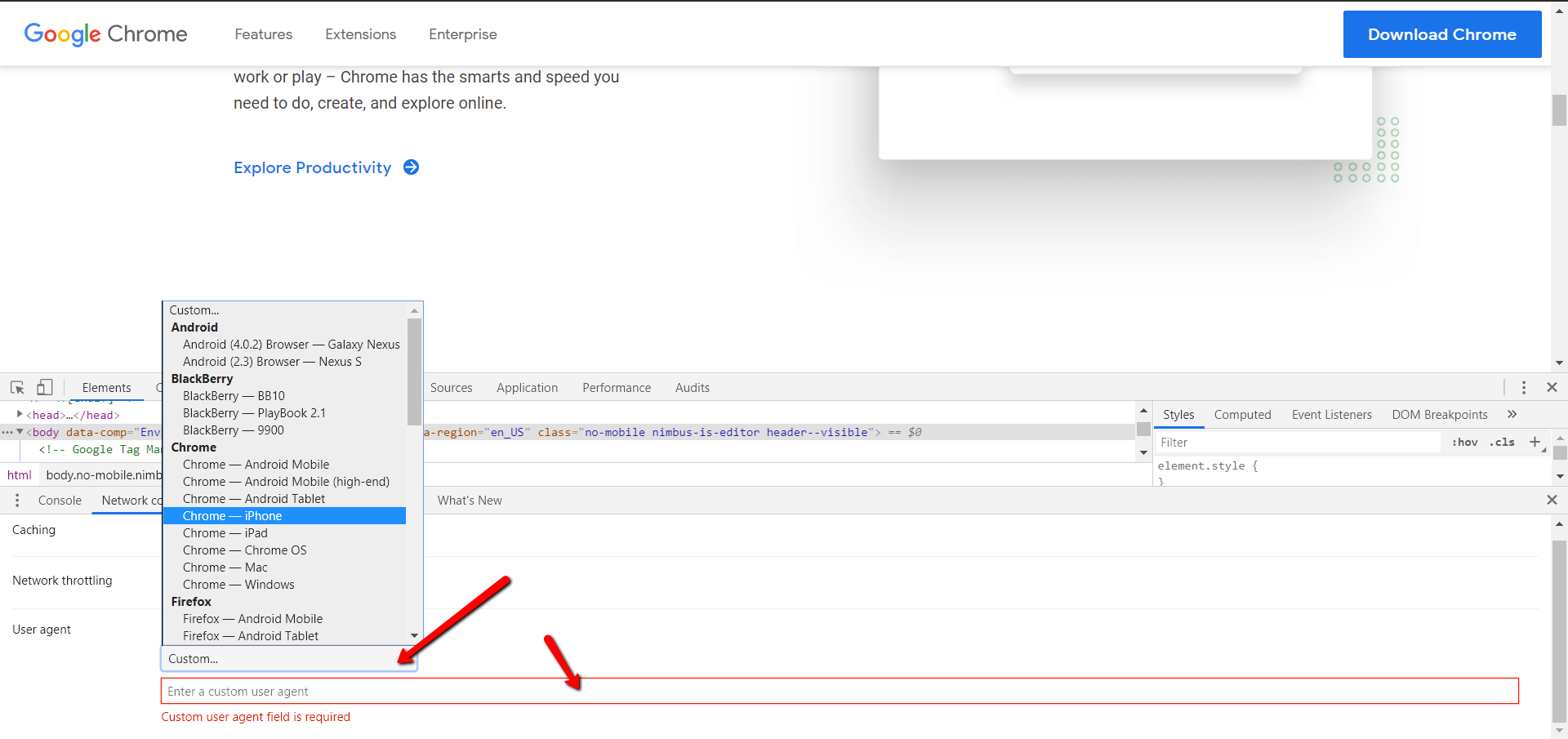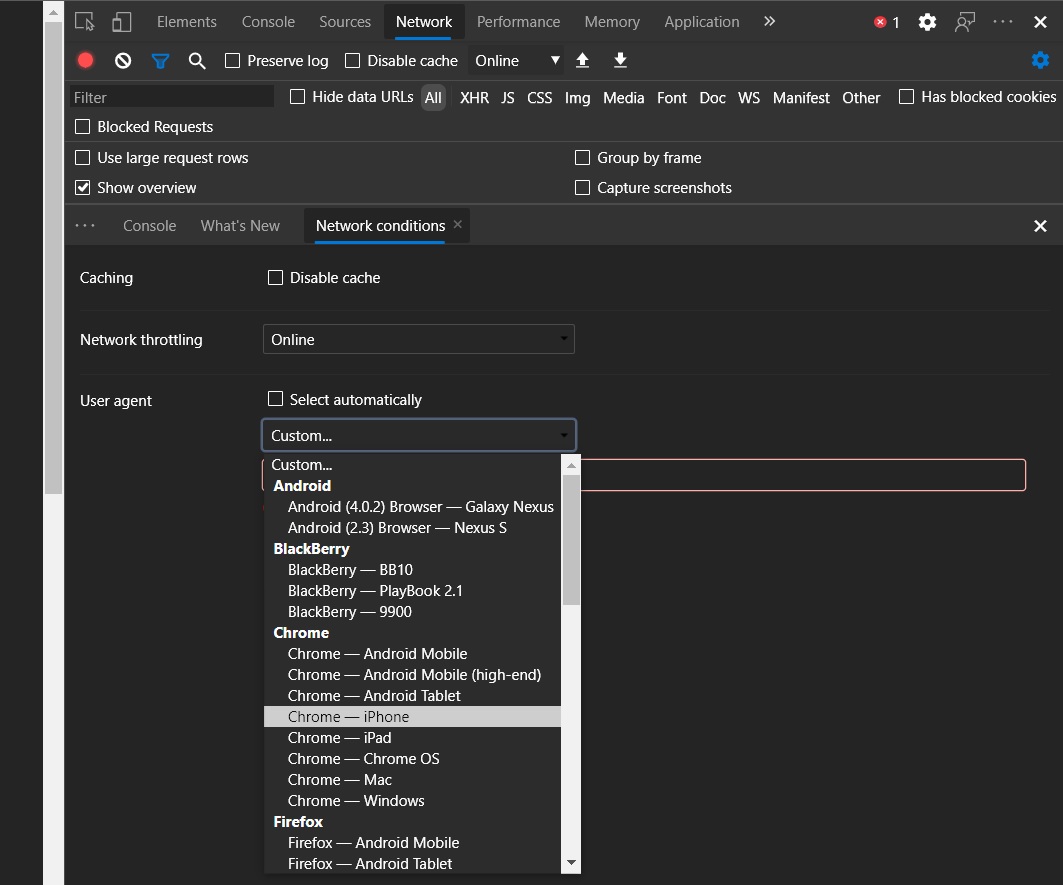Edge Browser User Agent
Since Edge/Spartan was Microsoft's first attempt to modernize the Trident engine, and Edge/Spartan's purpose was to match the feature set of (Blink, AppleWebKit, and Gecko) at the time, the user agent simply advertising itself as being everything is one way to prevent Webpage designers from easily targetting Edge the same way they targeted IE. Unfortunately it seems that there is currently no way to use Edge in a MS webbrowser control without using third party addons. While the proposed 'solution' to add dword:00002ee1 to FEATUREBROWSEREMULATION causes the webbrowser to (falsely) report Edge/12.9200AGENT as USERAGENT, in fact it still uses the Trident engine to render the web content. User agent is a string used by web servers to identify a web browser they are connected to. Web servers need to identify every web browser they are connected to to be able to know how they should serve the associated browser. This extension allows you to spoof your browser 'user-agent' string to a custom designation, making it impossible for websites to know specific details about your browsing arrangement. You can easily set custom 'user-agent' strings from the toolbar popup 2. Open Microsoft Edge. Press the F12 key to open its Developer Tools. Go to the Emulation tab. Under Mode, click in the User agent drop-down list.
By default, Windows Integrated Authentication (WIA) is enabled in Active Directory Federation Services (AD FS) in Windows Server 2012 R2 for authentication requests that occur within the organization's internal network (intranet) for any application that uses a browser for its authentication.
AD FS 2016 now has an improved default setting that enables the Edge browser to do WIA while not also (incorrectly) catching Windows Phone as well:
The above means you no longer have to configure individual user agent strings to support common Edge scenarios, even though they are updated quite often.
For other browsers, configure the AD FS property WiaSupportedUserAgents to add the required values based on the browsers you are using. You can use the procedures below.
View WIASupportedUserAgent settings
The WIASupportedUserAgents defines the user agents which support WIA. AD FS analyzes the user agent string when performing logins in a browser or browser control.
You can view the current settings using the following PowerShell example:
Change WIASupportedUserAgent settings

By default, a new AD FS installation has a set of user agent string matches created. However, these may be out of date based on changes to browsers and devices. Particularly, Windows devices have similar user agent strings with minor variations in the tokens. The following Windows PowerShell example provides the best guidance for the current set of devices that are on the market today that support seamless WIA:
If you have AD FS on Windows Server 2012 R2 or earlier:
If you have AD FS on Windows Server 2016 or later:
The command above will ensure that AD FS only covers the following use cases for WIA:
| User Agents | Use cases |
|---|---|
| MSIE 6.0 | IE 6.0 |
| MSIE 7.0; Windows NT | IE 7, IE in intranet zone. The 'Windows NT' fragment is sent by desktop operation system. |
| MSIE 8.0 | IE 8.0 (no devices send this, so need to make more specific) |
| MSIE 9.0 | IE 9.0 (no devices send this, so no need to make this more specific) |
| MSIE 10.0; Windows NT 6 | IE 10.0 for Windows XP and newer versions of desktop operating system Windows Phone 8.0 devices (with preference set to mobile) are excluded because they send User-Agent: Mozilla/5.0 (compatible; MSIE 10.0; Windows Phone 8.0; Trident/6.0; IEMobile/10.0; ARM; Touch; NOKIA; Lumia 920) |
| Windows NT 6.3; Trident/7.0 Windows NT 6.3; Win64; x64; Trident/7.0 Windows NT 6.3; WOW64; Trident/7.0 | Windows 8.1 desktop operating system, different platforms |
| Windows NT 6.2; Trident/7.0 Windows NT 6.2; Win64; x64; Trident/7.0 Windows NT 6.2; WOW64; Trident/7.0 | Windows 8 desktop operating system, different platforms |
| Windows NT 6.1; Trident/7.0 Windows NT 6.1; Win64; x64; Trident/7.0 Windows NT 6.1; WOW64; Trident/7.0 | Windows 7 desktop operating system, different platforms |
| Edg/ and Edge/ | Microsoft Edge (Chromium) for Windows Server 2012 R2 or earlier |
| =~Windowss*NT.Edg. | Microsoft Edge (Chromium) for Windows Server 2016 or later |
| MSIPC | Microsoft Information Protection and Control Client |
| Windows Rights Management Client | Windows Rights Management Client |
Edge Browser User Agent Reviews
Additional links
-->
To override the user agent string from Microsoft Edge DevTools:
Select
Control+Shift+P(Windows, Linux) orCommand+Shift+P(macOS) to open the Command Menu.Type
network conditions, choose Show Network conditions, and selectEnterto open the Network conditions tool.In the User agent section, turn off the Select automatically checkbox.
Choose a user agent string from the list, or enter your own custom string.
Microsoft Edge Browser User Agent String
Getting in touch with the Microsoft Edge DevTools team
Use the following options to discuss the new features and changes in the post, or anything else related to DevTools.

- Send your feedback using the Send Feedback icon or select
Alt+Shift+I(Windows, Linux) orOption+Shift+I(macOS) in DevTools. - Tweet at @EdgeDevTools.
- Submit a suggestion to The Web We Want.
- To file bugs about this article, use the following Feedback section.
Note
Portions of this page are modifications based on work created and shared by Google and used according to terms described in the Creative Commons Attribution 4.0 International License.
The original page is found here and is authored by Kayce Basques (Technical Writer, Chrome DevTools & Lighthouse).

This work is licensed under a Creative Commons Attribution 4.0 International License.
